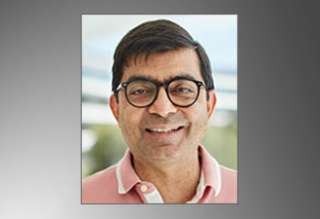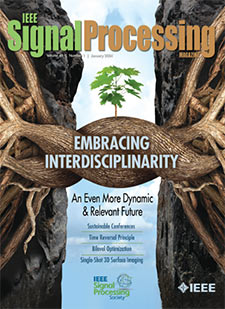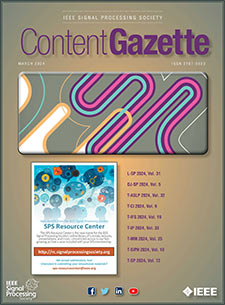- Our Story
- Publications & Resources
- Publications & Resources
- Publications
- IEEE Signal Processing Magazine
- IEEE Journal of Selected Topics in Signal Processing
- IEEE Signal Processing Letters
- IEEE/ACM Transactions on Audio Speech and Language Processing
- IEEE Transactions on Computational Imaging
- IEEE Transactions on Image Processing
- IEEE Transactions on Information Forensics and Security
- IEEE Transactions on Multimedia
- IEEE Transactions on Signal and Information Processing over Networks
- IEEE Transactions on Signal Processing
- IEEE TCI
- IEEE TSIPN
- Data & Challenges
- Submit Manuscript
- Guidelines
- Information for Authors
- Special Issue Deadlines
- Overview Articles
- Top Accessed Articles
- SPS Newsletter
- SigPort
- SPS Resource Center
- Publications Feedback
- Publications FAQ
- Blog
- News
- Dataset Papers
- Conferences & Events
- Community & Involvement
- Professional Development
- For Volunteers
- Information for Authors-OJSP
-
Home
Conferences14 April 2025 to 17 April 2025Conferences Events IEEE JSTSP Article IEEE Signal Processing Magazine IEEE TIFS Article IEEE TMM Article IEEE TSP Article Jobs in Signal Processing Lectures Machine Learning Seasonal Schools Signal Processing News SPM Article SPS Distinguished Lectures SPS Newsletter Article SPS Webinar SPS Webinars SPS Webinar Series Webinar webinars
-
Our Story
What is Signal Processing?

The technology we use, and even rely on, in our everyday lives –computers, radios, video, cell phones – is enabled by signal processing. Learn More » -
Publications & Resources
-
SPS Resources
- Signal Processing Magazine The premier publication of the society.
- SPS Newsletter Monthly updates in Signal Processing
- SPS Resource Center Online library of tutorials, lectures, and presentations.
- SigPort Online repository for reports, papers, and more.
- SPS Feed The latest news, events, and more from the world of Signal Processing.
-
SPS Resources
-
Conferences & Events
-
Community & Involvement
-
Membership
- Join SPS The IEEE Signal Processing Magazine, Conference, Discounts, Awards, Collaborations, and more!
- Chapter Locator Find your local chapter and connect with fellow industry professionals, academics and students
- Women in Signal Processing Networking and engagement opportunities for women across signal processing disciplines
- Students Scholarships, conference discounts, travel grants, SP Cup, VIP Cup, 5-MICC
- Young Professionals Career development opportunities, networking
- Get Involved
-
Technical Committees
- Applied Signal Processing Systems
- Audio and Acoustic Signal Processing
- Bio Imaging and Signal Processing
- Computational Imaging
- Image Video and Multidimensional Signal Processing
- Information Forensics and Security
- Machine Learning for Signal Processing
- Multimedia Signal Processing
- Sensor Array and Multichannel
- Signal Processing for Communication and Networking
- Signal Processing Theory and Methods
- Speech and Language Processing
- Technical Working Groups
- More TC Resources
-
Membership
-
Professional Development
-
Professional Development
- Mentoring Experiences for Underrepresented Young Researchers (ME-UYR)
- Micro Mentoring Experience Program (MiME)
- Distinguished Lecturer Program
- Distinguished Lecturers
- Distinguished Lecturer Nominations
- Past Lecturers
- Distinguished Industry Speaker Program
- Distinguished Industry Speakers
- Distinguished Industry Speaker Nominations
- Industry Resources
- IEEE Training Materials
- Jobs in Signal Processing: IEEE Job Site
-
Career Resources
- SPS Education Program Educational content in signal processing and related fields.
- Distinguished Lecturer Program Chapters have access to educators and authors in the fields of Signal Processing
- PROGRESS Initiative Promoting diversity in the field of signal processing.
- Job Opportunities Signal Processing and Technical Committee specific job opportunities
- Job Submission Form Employers may submit opportunities in the area of Signal Processing.
-
Professional Development
-
For Volunteers
-
For Board & Committee Members
- Board Agenda/Minutes* Agendas, minutes and supporting documentation for Board and Committee Members
- SPS Directory* Directory of volunteers, society and division directory for Board and Committee Members.
- Membership Development Reports* Insight into the Society’s month-over-month and year-over-year growths and declines for Board and Committee Members
-
For Board & Committee Members
Popular Pages
Today's:
- Submit a Manuscript
- (MLSP 2024) 2024 IEEE International Workshop on Machine Learning for Signal Processing
- Information for Authors
- (SLT 2024) 2024 IEEE Spoken Language Technology Workshop
- IEEE Transactions on Multimedia
- IEEE/ACM Transactions on Audio Speech and Language Processing
- IEEE Transactions on Information Forensics and Security
- IEEE Signal Processing Letters
- IEEE Transactions on Image Processing
- (ACSSC 2024) 2024 Asilomar Conference on Signals, Systems, and Computers
- Conferences & Events
- Conference Call for Papers
- SPS Scholarship Program
- IEEE Transactions on Signal Processing
- IEEE Journal of Selected Topics in Signal Processing
All time:
- Information for Authors
- Submit a Manuscript
- IEEE Transactions on Image Processing
- 404 Page
- IEEE/ACM Transactions on Audio Speech and Language Processing
- IEEE Transactions on Information Forensics and Security
- IEEE Transactions on Multimedia
- IEEE Signal Processing Letters
- IEEE Transactions on Signal Processing
- Conferences & Events
- IEEE Journal of Selected Topics in Signal Processing
- Information for Authors-SPL
- Conference Call for Papers
- Signal Processing 101
- IEEE Signal Processing Magazine
Last viewed:
- (MLSP 2024) 2024 IEEE International Workshop on Machine Learning for Signal Processing
- (SiPS 2024) 2024 IEEE International Workshop on Signal Processing Systems
- Signal Processing 101
- Members
- (SAM 2024) 2024 IEEE 13th Sensor Array and Multichannel Signal Processing Workshop
- (CISA 2024) 2024 IEEE Conference on Computational Imaging Using Synthetic Apertures
- Signal Processing Plays a Key Role in Environmental Research Projects: Keeping People and Ecosystems Alive and Healthy Is Perhaps the 21st Century's Biggest Challenge
- Conferences
- Scope & Mission
- Our Story
- A Free Machine Learning Lecture Series on the SPS Resource Center!
- IEEE JSTSP Special Issue on Neural Speech and Audio Coding
- IEEE Journal of Selected Topics in Signal Processing
- IVMSP TC Home
- Governance Documents
Member in the spotlight: Ercan E. Kuruoglu
You are here
Newsletter Menu
Newsletter Categories
Top Reasons to Join SPS Today!
1. IEEE Signal Processing Magazine
2. Signal Processing Digital Library*
3. Inside Signal Processing Newsletter
4. SPS Resource Center
5. Career advancement & recognition
6. Discounts on conferences and publications
7. Professional networking
8. Communities for students, young professionals, and women
9. Volunteer opportunities
10. Coming soon! PDH/CEU credits
Click here to learn more.
News and Resources for Members of the IEEE Signal Processing Society
Member in the spotlight: Ercan E. Kuruoglu
In this series we aim to introduce society members and other experts of the signal processing field by means of interviews. This month, we are happy to present the Dr. Ercan E. Kuruoglu, Senior Researcher from ISTI-CNR Pisa, Italy.
You were involved in editorial and conference organizer roles in various signal processing societies, including IEEE SPS, EURASIP and the Elsevier Digital Signal Processing journal. Could you briefly compare the scopes of the different organizations, and the categories of scientific content they expect from contributing authors?
They are all top quality organizations, which deliver the highest level of quality, in conferences, in publications and other professional services. I was involved in the organization of both ICASSP of IEEE SPS and EUSIPCO of EURASIP, which are the top two signal processing conferences in the world. ICASSP has more global vision while EUSIPCO has emphasis in Europe despite attracting attendance also from the USA and the Far East. Both provide frontier research talks and require top-level contributions to attend as speakers. EUSIPCO also provides a venue for the European project partners to meet. IEEE SPS publications are the highest impact factor journals, which are difficult to publish in and therefore promise a higher quality; however, in this process some work with novel ideas are eliminated due to over critical reviewers. Digital Signal Processing Journal of Elsevier aims to provide a just and fast review process and be flexible to accommodate research papers, which challenge existing conceptions. The topic areas cover all fields of signal processing including image processing and speech processing but also extend to emerging applications such as computational biology, environmental signal processing and financial time series analysis. In addition to regular research papers, it publishes also tutorial papers. The acceptance ratio of DSP is 26% and the mean time to first decision is 74 days.
What do you expect from the recent announcement on the SPS-EURASIP Partnership?
I expect this partnership to end the illogical divide between European and US research communities and help establish more collaborations between the two sides of the ocean as well as a more direct exchange of information.
When did you first come into touch with signal processing? What was your motivation of following a career in this domain?
During undergraduate courses. It was the course, which I studied with almost no effort, and I felt comfortable working with signal processing methodology. My career choice is motivated by the flexibility signal processing provides one to work on vastly different applications. In the beginning of my career, I was working on document image processing, then SAR imaging, and now on genomics. I have worked also with seismologists, astrophysicist. The field provides me continuous excitements with new problems.
What was the first signal processing algorithm you ever implemented? In which context was it used?
As far as I can remember, the first algorithm I developed was the Viterbi algorithm for trellis waveform coder design. I had combined it with Simulated Annealing and obtained trellis coders with the highest performance up to date. I was a final year undergraduate student then and managed publishing it a respected journal and later as a book chapter.
What are your current research interests in the signal processing field?
I work on several problems related to genomics. I also continue to work on alpha stable processes which was the topic of my PhD thesis and have collaborations on fields such as seismology and climatology. I frequently use information theory concepts as well in my work.
Could you introduce an important state-of-the-art research issue (or technology) in this field?
Gene interaction network modelling. We are getting increasingly aware that genes work in orchestra rather than in isolation. It is vital to understand the interactions between genes to be able to understand basic cell processes as well cancer. Our knowledge on probabilistic graph theory, especially Bayesian networks helps us to develop methodology for building gene interaction networks.
In your opinion, what was the most impressive result published in IEEE SPS journals and conferences within the last 10 years?
Particle filtering or sequential Monte Carlo, which provides a solution for the problem of estimation of non-stationary signals under non-Gaussian noise through observations nonlinearly related to unobservables, has been one of the most important developments. The following paper provides a very good presentation of the topic for distributed sensing:
O. Hlinka, F. Hlawatsch, and P. M. Djurić, “Distributed particle filtering in agent networks,” IEEE Signal Processing Magazine, vol. 30(1), pp. 61-81, 2013.
In your opinion, what was the most impressive result published in IEEE SPS journals and conferences within the last 12 months?
I consider the new emphasis on big data very interesting. The following paper provides a good introduction.
Slavakis, K.; Giannakis, G.B.; Mateos, G., "Modeling and Optimization for Big Data Analytics: (Statistical) learning tools for our era of data deluge," IEEE Signal Processing Magazine, vol.31, no.5, pp.18,31, Sept. 2014.
From your experience, is there something the signal processing society can learn from other societies?
The computer science society (especially ACM) is far more successful in achieving visibility in the wider public. We should be more open and communicative with the general public. We should aim to publish also papers, which are more accessible to other disciplines. Most things we had invented 20 years ago are being reinvented by Computer Science people who sell it better and more quickly to other fields.
From your point of view, what are the biggest challenges signal processing should solve in the next years?
Methods to deal with bigger, nonstationary data and nonlinear systems. Stationarity is no longer a valid assumption. Big is getting even bigger. Systems are no longer conveniently defined by input and output relations.
What would be your advice to a new PhD student who wants to start a career in signal processing?
Firstly, be a free thinker. Instead of running after what is the hype, follow your own interests and intuition. One day you may find out that you are the pioneer of a new field. Second, try to learn more mathematics than the engineering curriculum provides you. It will be very useful to make a difference in your career. Lastly, keep in mind that life is also short and precious and the world is unjust with billions living in poverty. Try to work on subjects that would improve life of human kind and reduce the imbalance on this world rather than entering projects that make military or financial companies richer.
Do you have any comments about the development of signal processing research?
We should drop some dogmas and be more flexible about the methodologies and application areas.
Which application fields should be more focused in IEEE SPS publication?
IEEE SPS should adopt a more liberal definition of signal processing and consider applications in a wider scale ranging from financial data analysis to environmental engineering.
Do you have any suggestions about our e-NewsLetter?
Should be more communicative with the readers.
Brief biography
Ercan E. Kuruoglu was born in Turkey in 1969. He obtained his PhD degree in Information Engineering at the Cambridge University, in 1998. He joined the Xerox Research Center in Cambridge in 1998. In 2000, he was in INRIA-Sophia Antipolis as an ERCIM fellow. In 2002, he joined ISTI-CNR, Pisa where he is currently a Senior Researcher. He was a visiting professor in Georgia Institute of Technology-Shanghai in 2007 and 2011. He is a recipient of Alexander von Humboldt Experienced Research Fellowship and worked at Max Planck Institute for Molecular Genetics during his fellowship period. He was an Associate Editor for IEEE Trans. Signal Processing and IEEE Trans. Image Processing. He is the Editor in Chief of Digital Signal Processing. He was the Technical co-Chair of EUSIPCO 2006 and the Tutorials co-Chair of ICASSP 2014. He was a member of the IEEE Technical Committee on Signal Processing Theory and Methods. His research interests are in statistical signal and image processing and information theory with applications in genomics, telecommunications, computer vision and astronomy.
Open Calls
News & Announcements
Conference News
Research Opportunities
Publications News
Society News
Initiatives & Trends
TC News
PhD Theses
Chapter & DL News
SPS on Twitter
- DEADLINE EXTENDED: The 2023 IEEE International Workshop on Machine Learning for Signal Processing is now accepting… https://t.co/NLH2u19a3y
- ONE MONTH OUT! We are celebrating the inaugural SPS Day on 2 June, honoring the date the Society was established in… https://t.co/V6Z3wKGK1O
- The new SPS Scholarship Program welcomes applications from students interested in pursuing signal processing educat… https://t.co/0aYPMDSWDj
- CALL FOR PAPERS: The IEEE Journal of Selected Topics in Signal Processing is now seeking submissions for a Special… https://t.co/NPCGrSjQbh
- Test your knowledge of signal processing history with our April trivia! Our 75th anniversary celebration continues:… https://t.co/4xal7voFER
Home | Sitemap | Contact | Accessibility | Nondiscrimination Policy | IEEE Ethics Reporting | IEEE Privacy Policy | Terms | Feedback
© Copyright 2024 IEEE – All rights reserved. Use of this website signifies your agreement to the IEEE Terms and Conditions.
A not-for-profit organization, IEEE is the world's largest technical professional organization dedicated to advancing technology for the benefit of humanity.








